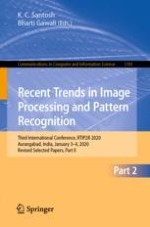This two-volume set constitutes the refereed proceedings of the Third International Conference on Recent Trends in Image Processing and Pattern Recognition (RTIP2R) 2020, held in Aurangabad, India, in January 2020.
The 78 revised full papers presented were carefully reviewed and selected from 329 submissions. The papers are organized in topical sections in the two volumes. Part I: Computer vision and applications; Data science and machine learning; Document understanding and Recognition. Part II: Healthcare informatics and medical imaging; Image analysis and recognition; Signal processing and pattern recognition; Image and signal processing in Agriculture.
